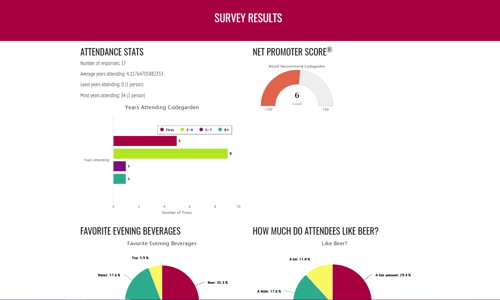 When you are setting out to build a new website for your business, it’s important to consider both who your target market is, and what information, products, and services you will be offering.
When you are setting out to build a new website for your business, it’s important to consider both who your target market is, and what information, products, and services you will be offering.
Who
Your target market and your branding will determine a lot about how your website should look, especially in terms of things like colors and mood. If you have a strong brand developed (with a logo, etc), you need to make sure your site design harmonizes with and reinforces that branding. One obvious thing is to select a color palette that doesn’t clash with your logo. The more subtle thing is to determine what your brand means and feels like – and have a design that supports that. Visitors to your site will react, either consciously or subconsciously, to your visual design, so you need the design to send a message which is truly authentic to your branding and business mission.
Audience will determine some other practical concerns – if your target market is a bit older, you will want to make sure that the text is large enough, and has enough color contrast to be easily readable. Certain design elements will appeal more to a younger demographic, and if your market has more conservative tastes, you should keep that in mind when planning your visual design.
What
If your business involves a lot of personal service – such as coaching or consulting, it’s a good idea to replicate, as much as possible, the experience a prospect would have if they met you in person, or were working with you. Make sure you have a good headshot on the site, and your personality comes though in the tone of the text. You might also want to consider your values and personality when designing your branding and visual design. If you are an outgoing and exuberant person, or if optimism is a big part of what you encourage in your clients, your design should reflect that sunny disposition. If calm and steady is more your mode, that can come out subtly in your design. The important thing is that you present yourself as genuinely as possible, so your best potential clients will be attracted to your business and recognize the fit with themselves.
Another consideration in the “what” category has to do with the information, products, services, etc you plan to offer. For instance, if events are a big part of what you do, your design should have a spot to highlight them – maybe even on every page, and at least prominently on the homepage. If you have written a book and want to promote it heavily, you might consider including it right below your navigation sidebar, so that it stands out and is easy to find. You will probably want to have a photo of the book, to make it even more compelling.
How
Now that you’ve been thinking about who your website is for and what you want to present on it, the next step is how to get it.
The first step is to find a web designer who has a portfolio that appeals to you. Bonus points if at least one of the sites is geared toward a target market somewhat similar to your own. The next step is to get in touch and have a conversation. What you are looking for here is a feeling of connection – that the design “gets you” and cares about your business and who your market is. Watch out for designers who automatically offer a generic solution without showing an interest in your particular business.
Once you have selected your designer, let her know as much as you can about the “who” and “what” you have figured out. Make sure to provide high-quality digital copies of your logo, headshot and any other branding or graphics (such as product photos, book cover, etc) you have.
In addition, it can be very helpful if you can send a short list of websites which appeal to you for whatever reason, along with notes about what specifically you like about the design – is it the colors, the layout, the amount of information presented on each page, the use of graphics? This will help you get a design that you love.
Web Action Steps
- Make a list of traits for your target market – include demographics, psychographics, biggest fears/concerns, and biggest hopes, as they relate to your business.
- Consider the mood of you and your business. What do you want your audience to feel when they see your website? Excited, soothed, inspired, etc.
- Make a list of all the information you want to present on your site – list your products services, events, etc. Think long-term – at least 6 months to a year ahead. For example, if you know your book will be published within the next 3 months, and you want to feature it prominently, plan an appropriate spot in the site for it now.
- Consider what the “face” of your business is – is it you, a mascot, a logo, your team, your clients? How can that be portrayed?
- Find a designer to work with, and share all this information with him/her.
- Have a fabulous website that represents your business authentically!
Getting the right design for your website is the first big step in online business success. If you need help exploring your target market, branding, and mood, and determining what content your website should have, or if you are just looking for that great web designer, I invite you to take a look at what I have to offer and consider getting in touch.








